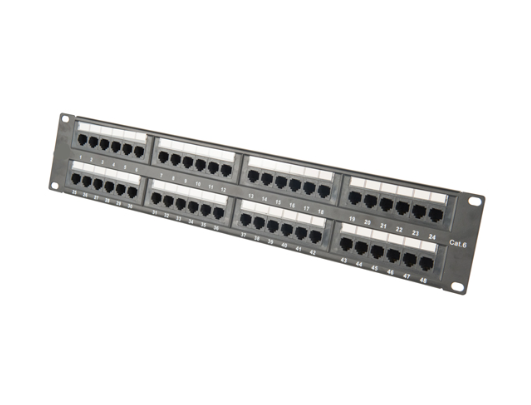News
Site Editor
 Site
https://leonetworkgroup.usa18.wondercdn.com/uploads/image/5fe152faa587d.png
Installing a network patch panel is a fundamental task that every network administrator should learn. It is a crucial component for any structured cabling system and serves as a central point for connecting all the network devices. Here are the steps to install a network patch panel.Step 1: Choose the Right Patch PanelBefore installing a network patch panel, you need to choose the appropriate type
Site
https://leonetworkgroup.usa18.wondercdn.com/uploads/image/5fe152faa587d.png
Installing a network patch panel is a fundamental task that every network administrator should learn. It is a crucial component for any structured cabling system and serves as a central point for connecting all the network devices. Here are the steps to install a network patch panel.Step 1: Choose the Right Patch PanelBefore installing a network patch panel, you need to choose the appropriate type
How To Install A Network Patch Panel
Views: 483
Author: Site Editor
Publish Time: 2023-07-10
Origin: Site
Installing a network patch panel is a fundamental task that every network administrator should learn. It is a crucial component for any structured cabling system and serves as a central point for connecting all the network devices. Here are the steps to install a network patch panel.
Step 1: Choose the Right Patch Panel
Before installing a network patch panel, you need to choose the appropriate type of panel. There are many options to choose from, including unshielded twisted pair (UTP) or shielded twisted pair (STP) panels. Ensure that the patch panel matches the type of cable that you will use in your network installation.
Step 2: Prepare the Mounting Location
Once you have selected the patch panel, you need to find a suitable location to mount it. The location should be easily accessible and with enough space for the patch panel, patch cords, and other related equipment. Make sure that the location is clean and free from dust to prevent any issues with connectivity.
Step 3: Install the Patch Panel
Mount the patch panel onto the wall or rack using screws and screwdriver. Make sure to secure the patch panel in position correctly. Ensure that the patch panel is level to avoid any bending of cables or patch cords.
Step 4: Cable Routing
Use cable management panels to run the cables to the patch panel. Arrange the cables neatly and label them appropriately. Proper cable management ensures easy identification of cables and reduces clutter. It also helps with diagnosing any future connectivity issues.
Step 5: Terminating the Cables
Strip the ends of the cables to expose the wires for termination. Use a punch-down tool to terminate UTP or STP cables onto the patch panel. Follow the wiring standard and color code specified by the patch panel manufacturer.
Step 6: Testing
Once all cables are terminated, test the connectivity by using a cable tester. It confirms that all cables are correctly wired and free of any faults. A faulty cable can cause connectivity issues within the network.
Conclusion
Installing a patch panel may seem like a daunting task, but it is an essential part of any network infrastructure. By following the steps above, you can easily and confidently install a patch panel, providing a reliable and efficient network solution for your organization.
If you want to know more about industrial network cabinet,china fiber optic splice closure,china fiber optic distribution box,please consult the fiber optic splice closure factory









